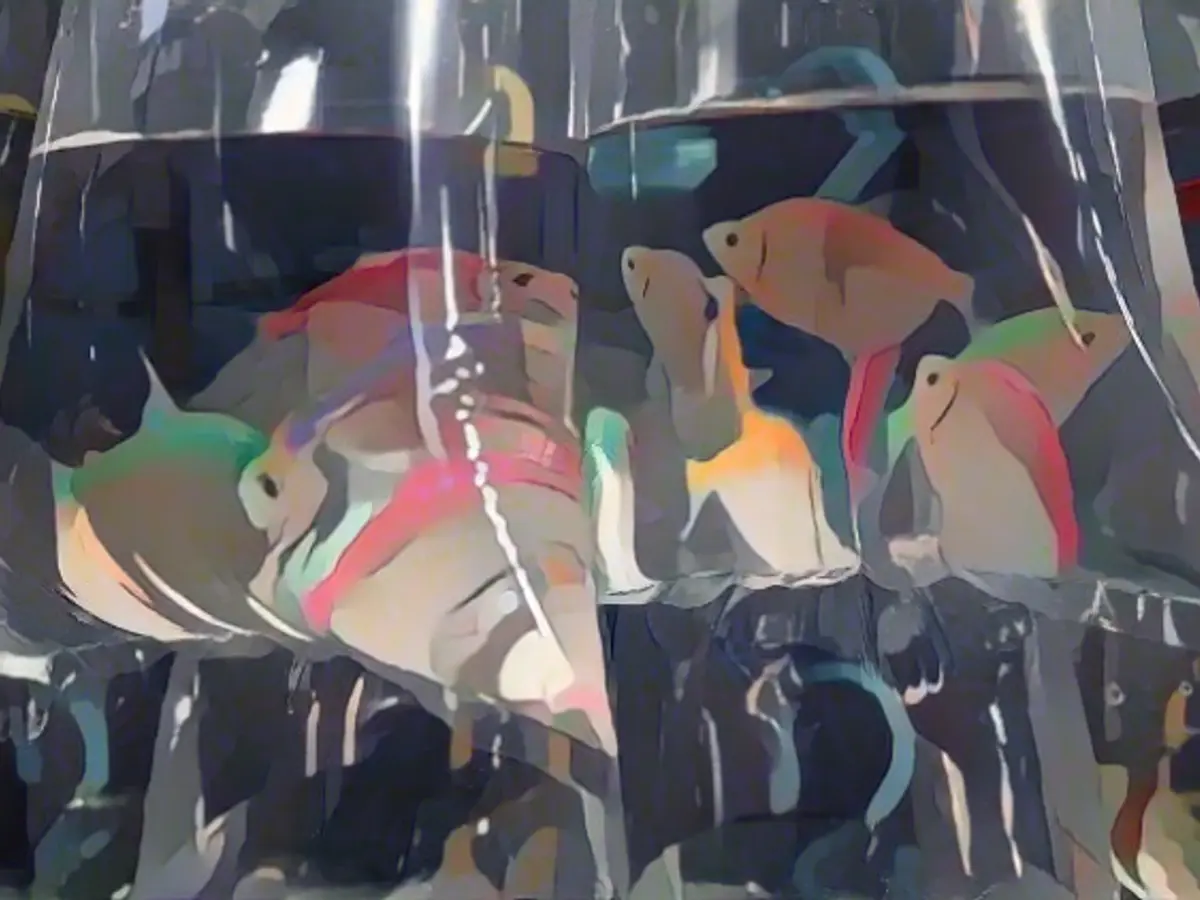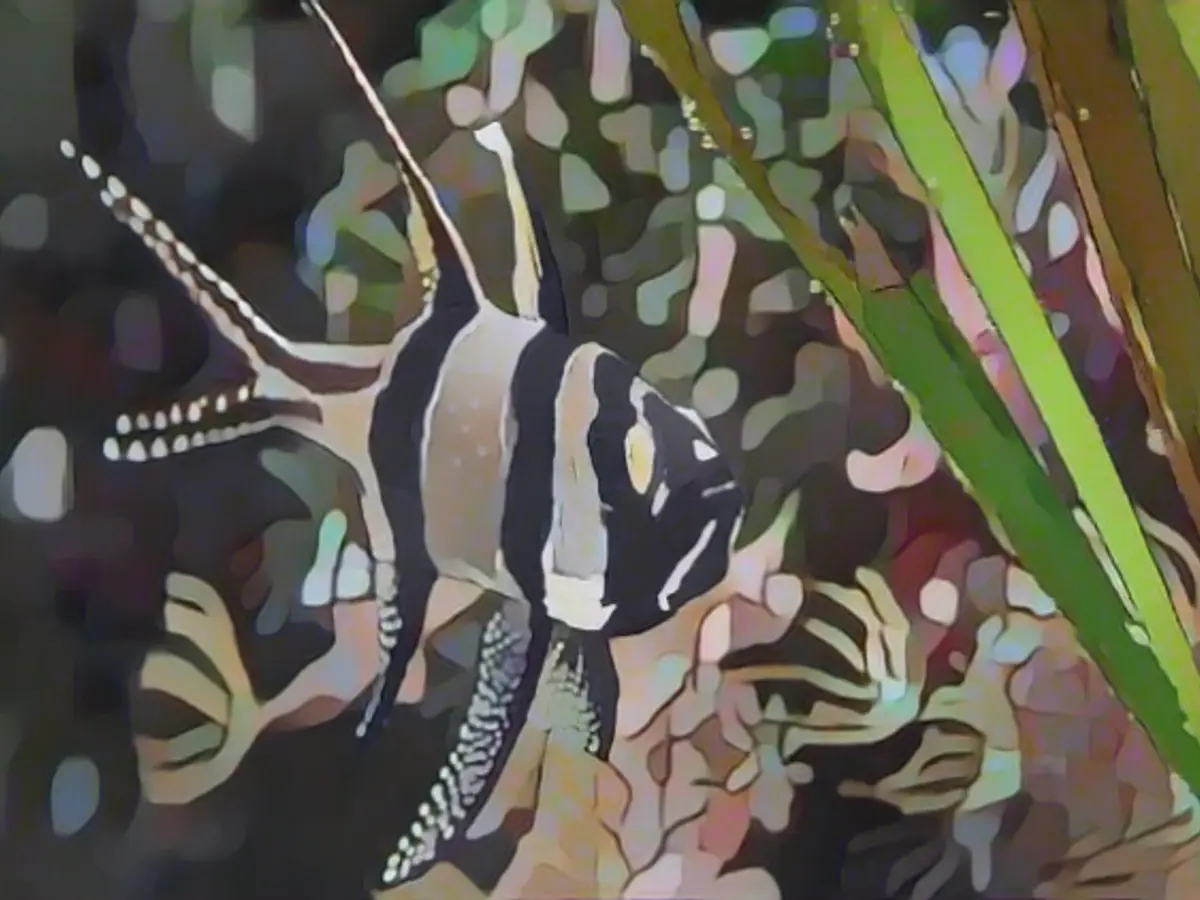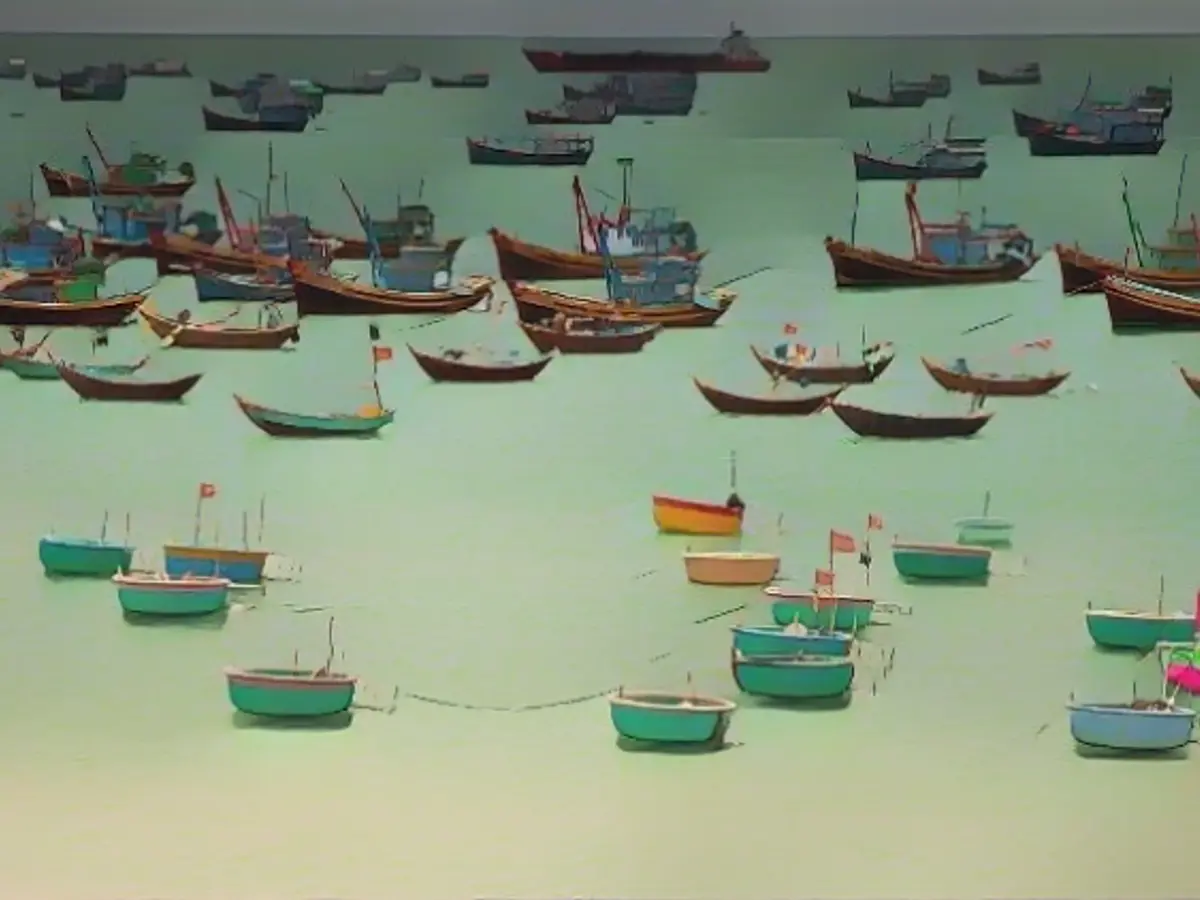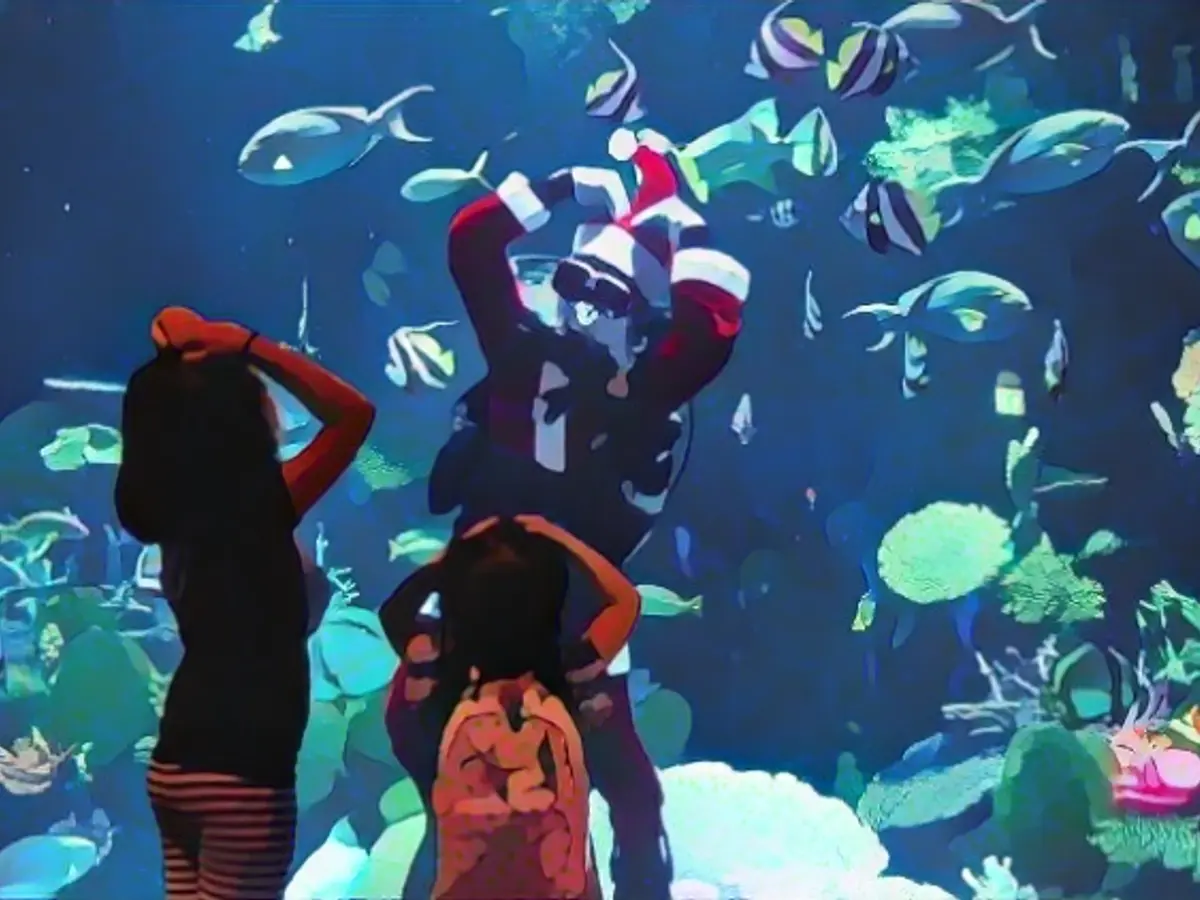Millions of fish die for domestic aquariums
A marine aquarium for Christmas or a birthday - that sounds like a great idea. And ever since "Finding Nemo", many children have wanted fish as pets. But anyone toying with the idea should also bear in mind that these mini-oceans mean animal suffering and millions of fish die because of them.
They are pretty to look at, the colorful fish in seawater aquariums. Many observers have no idea how much animal suffering is behind this hobby. According to a study just published in the journal "Science Advances", almost half of the marine animals caught in the sea die by the time they are swimming in a retail tank. According to the study, the majority of animals in marine aquariums - around 90 percent - come from the wild.

Many of the creatures fished from the sea die directly during capture or in the exporters' facilities, and the length of the supply chain is also an influencing factor, as the research team explains. A few years ago, the Food and Agriculture Organization (FAO) and the United Nations Environment Programme (UNEP) estimated that up to 80 per cent of marine ornamental fish die during capture and transport.
The cheaper the fish, the higher the losses
"The lower the commercial value of the fish, the higher the losses," says Sandra Altherr from the animal welfare organization Pro Wildlife. "People are more careful with large rarities than with smaller, cheaper species, where the procurement value is low and nature provides cheap supplies."

They are usually transported in plastic bags that are stored in transport crates. The longest phase is often the one from the catcher to the exporter, often via several middlemen, sometimes using adventurous means and routes of transportation, explains Altherr. "All in all, it can take weeks to reach the end customer - and each stage of the trade has its own loss rates."
Mass fishing largely goes unnoticed
The mass capture of marine animals for the aquarium trade goes largely unnoticed - even though it generates large sums of money. According to the research team led by Gordon Watson from the University of Portsmouth, the industry sells around 55 million organisms worth 2.15 billion dollars every year. Around twice as many animals are caught at the beginning of the trade chain.
The data used for the current projection included the sales of aquarium fish retailers in the three major importing countries of the UK, USA and Italy. The estimate takes into account 210 invertebrate species and 296 fish species, i.e. a total of 506 species. Due to data gaps, the extrapolation is very conservative, meaning that the figures are probably much higher in reality.
The researchers classify 25 of the species considered in the "extremely high exploitation" category. Species that are not among the most traded can also fall into this category - for example, if their distribution area is very small. In many cases, the consequences of the removal of marine animals for aquariums for the respective ecosystem are hardly known.
Ornamental fish trade hardly controlled
It is surprising and worrying that such a large group of vertebrates can be traded without suitable regulation and monitoring systems in place, criticized Monica Biondo from the Swiss nature conservation foundation Fondation Franz Weber in 2020 in the specialist journal "Animals". Much tighter control of the ornamental fish trade is long overdue.
According to Watson's team, invertebrates such as snails, stony corals, certain crabs and shrimps dominate the best-selling groups of marine life. 30 species make up a good 40 percent of the animals traded worldwide, including only three fish species. The main exporting countries include the Philippines and Indonesia.

One of the best documented examples of a species threatened by the ornamental fish trade is the highly endangered Banggai cardinalfish (Pterapogon kauderni), says Altherr. It only has a tiny distribution area. So far, however, all efforts to ban the trade have failed due to resistance from Indonesia, the only country of origin. According to a 2019 study, pantherfish (Chromileptes altivelis), harlequin sweetlips (Plectorhinchus chaetodonoides) and velvet anemonefish (Premnas biaculeatus) are also susceptible to overexploitation.
An estimated 2.3 million aquariums in Germany
There are no figures on the number of private saltwater aquarium owners. According to industry estimates, there are around 2.3 million aquariums in Germany alone - freshwater and saltwater tanks combined. According to data from the industry association FEDIAF, the EU-wide figure is around 11 million. Altherr says that purchases are often made purely on the basis of appearance and not the biology and needs of the animals. "Time and again, we see that fish from different regions of the world are kept together in one aquarium and schooling fish are kept individually or at most in pairs."
The animated film "Finding Nemo", which was released in the USA in 2003 and features a clownfish as the main protagonist, played a major role in the growing interest in miniature oceans for the home. According to the aid organization Saving Nemo, which is dedicated to protecting the species, over one million specimens are now caught in the oceans every year. This has decimated the population considerably.
Millions more aquariums expected
In their current analysis, the researchers assume that several million new owners of marine aquariums in emerging countries such as China will be added in the coming years. The consequences for biodiversity and the survival of certain populations are hardly foreseeable.
Around a quarter of all marine life is dependent on coral reefs at some point in their lives, explains Watson's team. And these are already among the most endangered ecosystems in the world due to climate change, fishing activities and environmental pollution.
Consequences for fishermen too
However, it is not only marine life that faces dire consequences: An estimated six million fishermen in 100 countries - mainly small-scale fishermen from Southeast Asian countries - depend on coral reefs to make a living, the researchers explain. They provide a quarter of the total fish catch in emerging countries.

Such fish - as important as they are for feeding countless people - only have a low market value. Accordingly, the financial pressure to do more to preserve the reefs and to operate more sustainably is low in this sector. However, Watson's researchers are convinced that the situation is different in the ornamental fish market for financially strong hobbyists, where a single animal can cost several hundred dollars. Here there is a greater economic incentive for more protection of biodiversity.
Criticism of the trend towards more breeding in aquacultures
The researchers are therefore also critical of the trend towards more breeding in aquacultures. They are convinced that if the catch of ornamental fish declines, this could have considerable negative consequences for the coastal communities that depend on it and for supporting reef protection. They are referring to the local people and the ecosystem there, not the fate of the animals caught.
Most of the money is not made by the small local fishermen, but by the traders, Sandra Altherr points out. "This applies to the entire wildlife trade." For many animal trappers, this is just a tedious sideline, with only the importers and local retail chains making large margins.
Pro Wildlife 's advice is therefore different and as simple as it is clear: "We definitely recommend not keeping marine aquariums, both for animal welfare and species protection reasons," emphasizes Altherr. "You can't recreate the complex beauty of a coral reef in your living room anyway."
Read also:
- This will change in December
- German activists speak out in Dubai on suffering in Israel and the Gaza Strip
- Nuclear fusion - hype or solution to energy problems?
- Budget crisis fuels debate on citizen's income - Bas warns against populism
- Despite the popularity of marine aquariums, a study published in the journal "Science Advances" reveals that nearly half of the marine animals caught for these aquariums die before making it to retail tanks, and the majority of these animals come from the wild.
- Sandra Altherr from Pro Wildlife points out that the lower the commercial value of the fish, the higher the losses, as people are often less careful with cheaper species, and nature provides an abundant supply.
- Monica Biondo from the Swiss nature conservation foundation Fondation Franz Weber criticism the lack of regulation and monitoring in the ornamental fish trade, stating that it is surprising and worrying that such a large group of vertebrates can be traded without appropriate controls.
- According to a 2019 study, certain fish species such as pantherfish (Chromileptes altivelis), harlequin sweetlips (Plectorhinchus chaetodonoides) and velvet anemonefish (Premnas biaculeatus) are also susceptible to overexploitation, and efforts to ban the trade have failed due to resistance from countries like Indonesia, where these species are primarily caught.
Source: www.ntv.de







